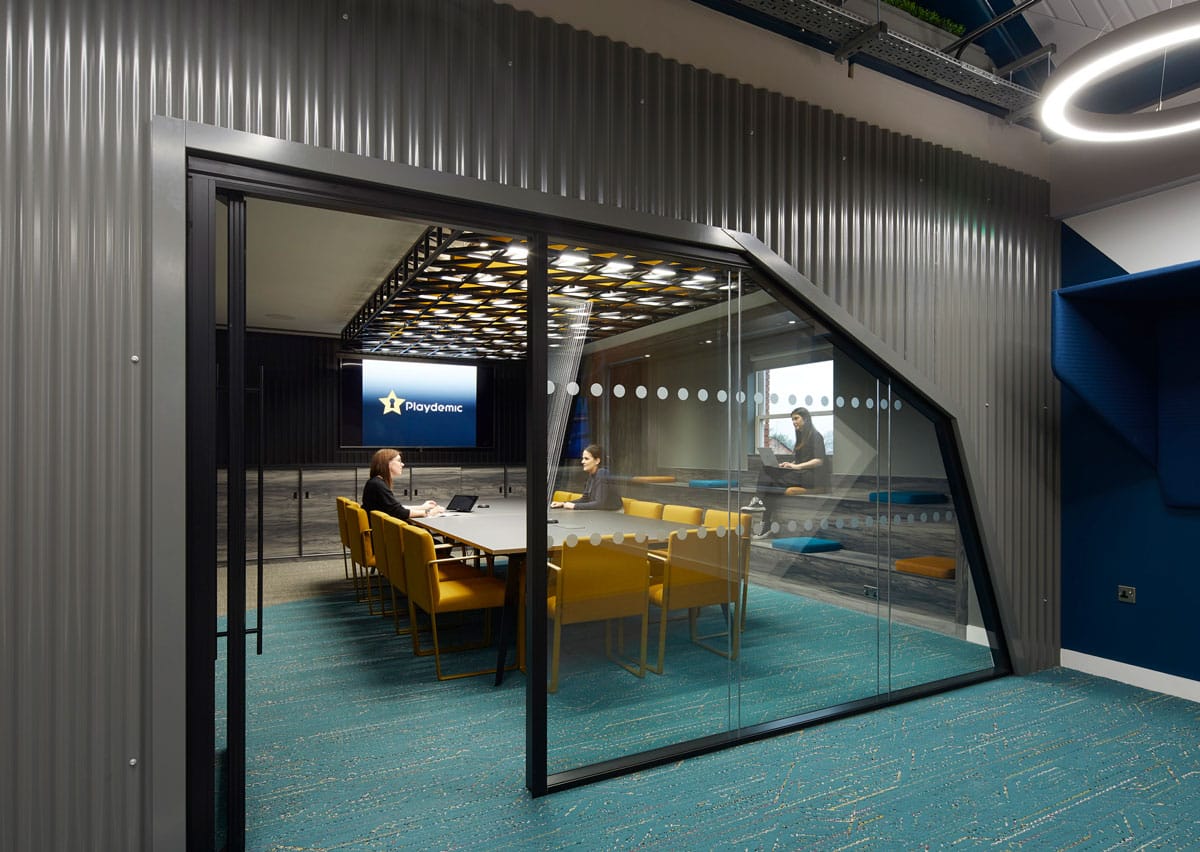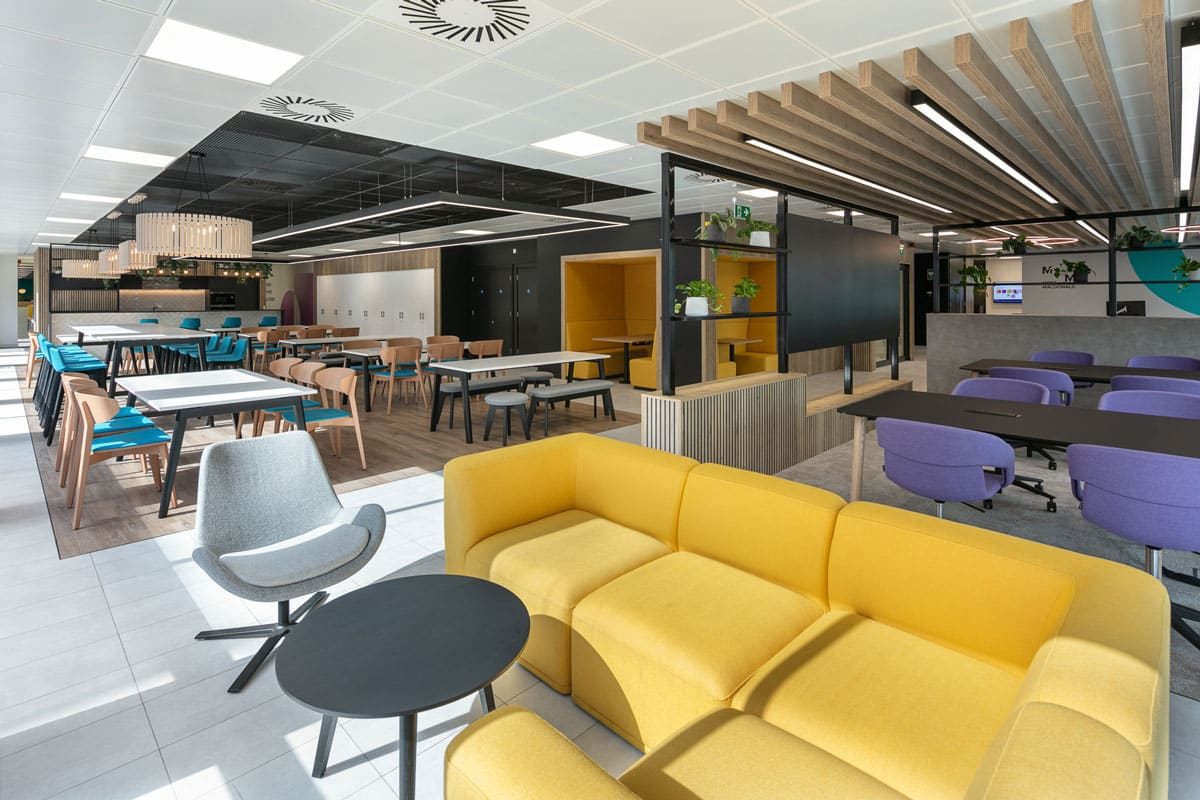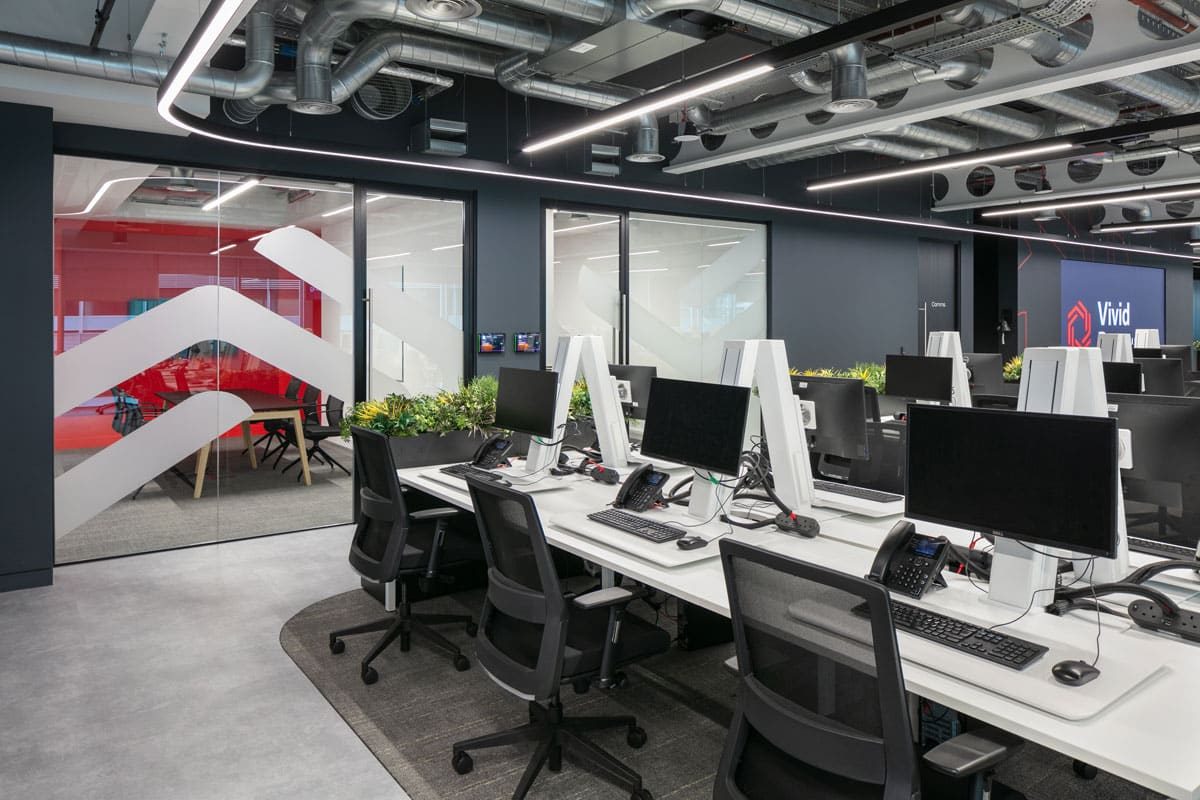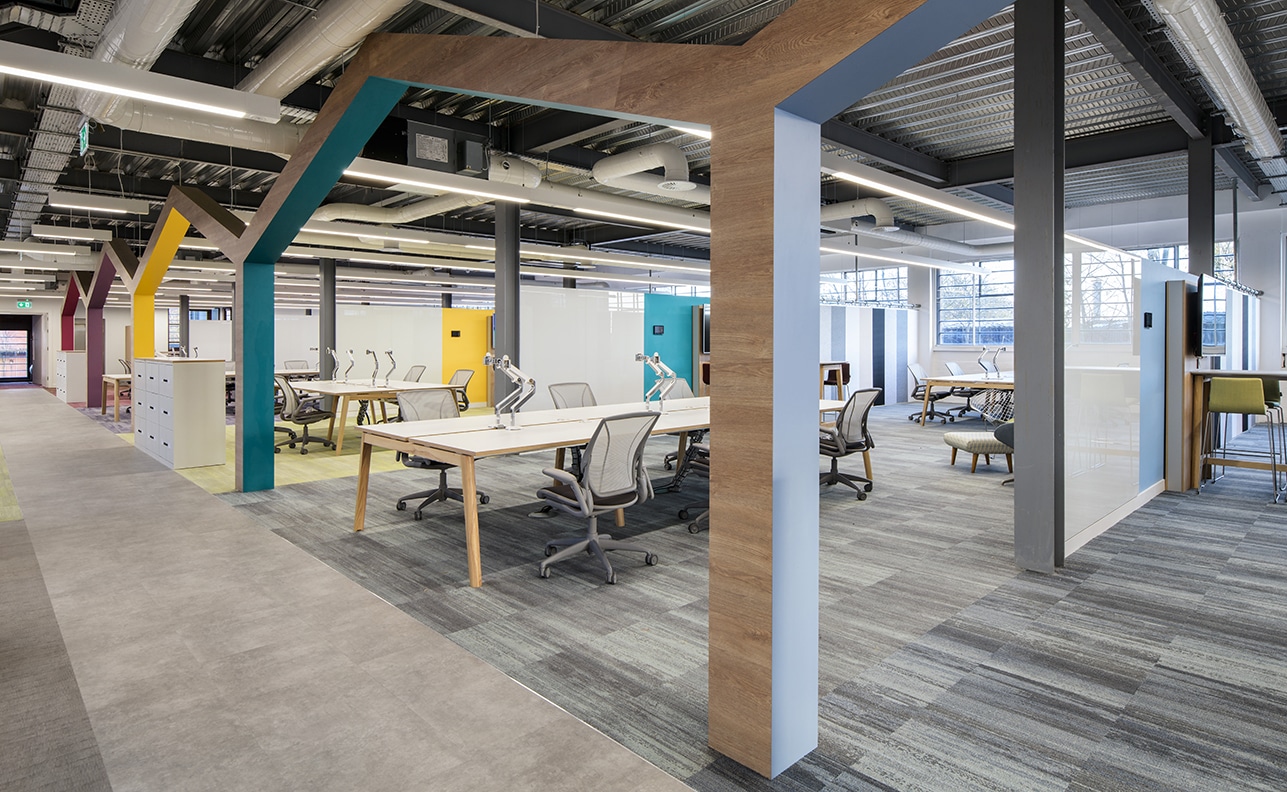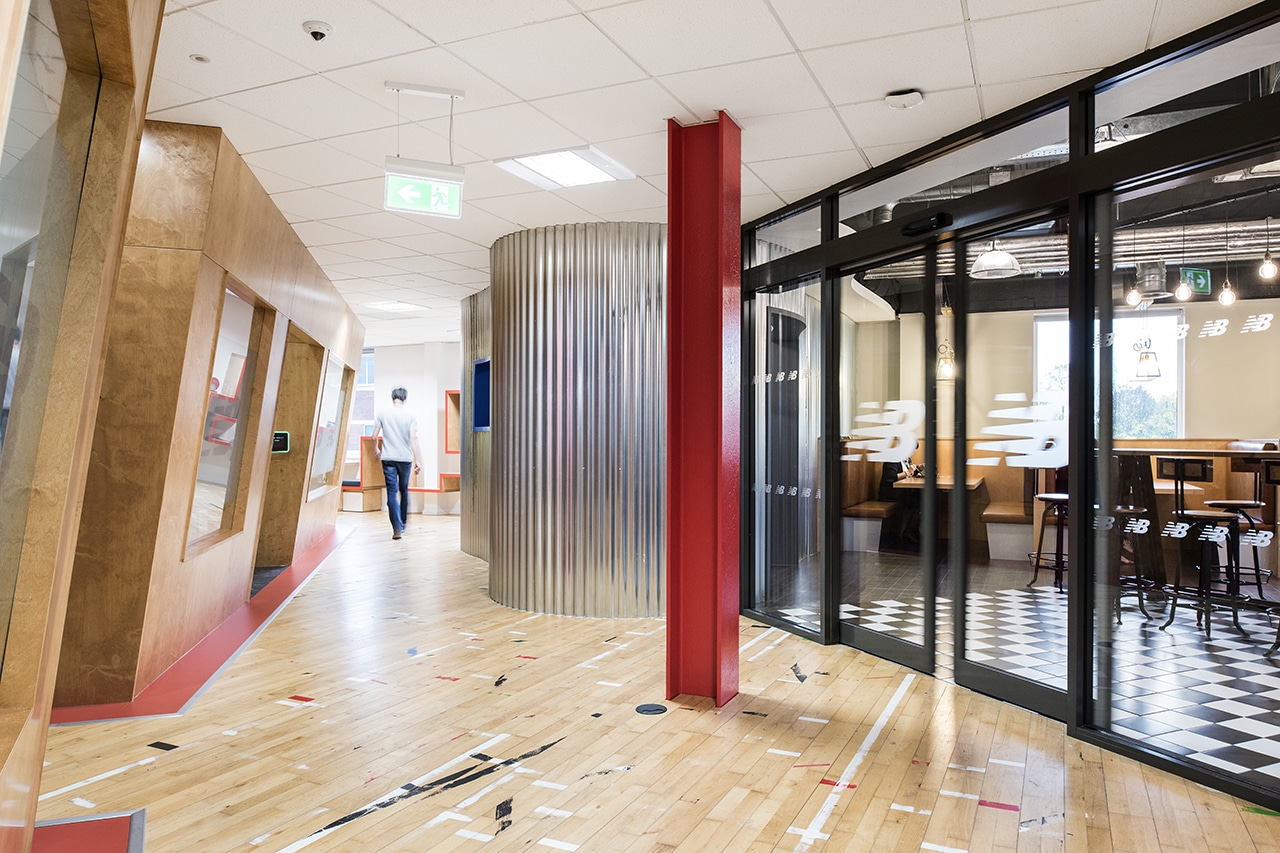Introduction
A well-designed office is more than just an aesthetically pleasing space. It plays a vital role in employee well-being, health, and productivity. Ergonomic design focuses on adapting workspaces to fit human needs, reducing strain and discomfort while promoting efficiency.
From adjustable furniture to optimised layouts, ergonomic principles help prevent injuries and improve workplace satisfaction. By investing in ergonomics, businesses create healthier environments where employees can thrive. This article explores the benefits of ergonomic office design and how businesses can implement practical solutions to enhance well-being.
The Benefits of Ergonomic Workplace Design
1. Reducing Musculoskeletal Disorders (MSDs)
Long hours spent at a poorly designed workstation can lead to musculoskeletal disorders (MSDs). These include back pain, neck strain, and repetitive stress injuries. Sitting in the wrong posture for extended periods can cause long-term health problems.
How to Prevent MSDs:
- Ergonomic chairs with lumbar support encourage proper spinal alignment.
- Height-adjustable desks allow users to switch between sitting and standing, reducing back strain.
- Monitor positioning at eye level prevents neck strain.
- Wrist support for keyboards and mice reduces repetitive strain injuries.
By incorporating these elements, businesses can significantly lower the risk of workplace injuries and discomfort.
2. Boosting Productivity and Focus
Discomfort at work can reduce concentration and overall performance. Employees who constantly shift in their chairs or experience aches are less engaged.
An ergonomic setup improves posture and enhances comfort, allowing employees to stay focused for longer. Features such as adjustable desks, proper lighting, and optimised layouts ensure employees work without unnecessary strain.
Key Productivity Enhancements:
- Sit-stand desks improve energy levels and encourage movement.
- Noise-reducing materials help minimise distractions.
- Task lighting prevents eye strain and improves focus.
- Ergonomic keyboards and mice reduce discomfort, increasing efficiency.
When employees are comfortable, they are more engaged and motivated, which directly impacts workplace performance.
3. Supporting Mental Well-being
A well-designed workspace influences not only physical health but also mental well-being. Sitting in an uncomfortable position for long hours can lead to frustration, stress, and fatigue.
An ergonomic office promotes a sense of comfort, leading to reduced stress levels and improved mood. Natural lighting, greenery, and breakout areas contribute to a more relaxed and productive atmosphere.
Mental Health-Boosting Elements:
- Natural light: Reduces eye strain and boosts mood.
- Biophilic design: Incorporates plants and natural elements to enhance well-being.
- Breakout spaces: Provide employees with areas to relax and recharge.
- Noise control: Reduces stress levels in open-plan offices.
4. Acoustic Design for a Balanced Environment
Since office social spaces are intended to encourage interaction, noise control is crucial. Without proper acoustic design, these areas can become disruptive rather than beneficial. To maintain balance:
- Use Sound-Absorbing Materials: Soft furnishings, rugs, and acoustic panels help reduce noise.
- Designate Quiet Zones: Incorporate booths or enclosed spaces for those who need solitude.
- Strategic Placement: Position social areas away from high-focus work zones to prevent disturbances.
By addressing acoustics, businesses can create spaces that cater to different work styles without causing disruption.
Essential Ergonomic Design Features
1. Ergonomic Furniture
One of the easiest ways to improve workplace ergonomics is by investing in high-quality furniture designed for comfort and support.
- Ergonomic chairs with lumbar support help maintain proper posture.
- Sit-stand desks encourage movement and flexibility.
- Footrests provide additional lower-body support.
- Anti-fatigue mats reduce strain for employees who stand for long hours.
2. Workstation Setup
A poorly arranged workstation can lead to unnecessary discomfort. Optimising desk and screen placement improves posture and minimises strain.
- Monitors should be positioned at eye level, an arm’s length away.
- Keyboards and mice should be placed to prevent wrist strain.
- Document holders reduce neck bending and improve efficiency.
3. Lighting and Air Quality
Good lighting and ventilation create a more comfortable working environment.
- Natural light improves focus and reduces eye fatigue.
- LED task lighting provides adjustable brightness.
- Proper ventilation maintains air quality, reducing fatigue.
4. Encouraging Movement
Sitting for long hours is linked to numerous health risks. Encouraging employees to move regularly helps improve circulation and overall well-being.
- Breakout spaces encourage movement and informal collaboration.
- Walking meetings reduce sedentary behaviour.
- Height-adjustable desks allow employees to alternate between sitting and standing.
Investing in Ergonomic Office Design
Cost vs. Return on Investment
Some businesses hesitate to invest in ergonomic design due to cost concerns. However, the long-term benefits far outweigh the initial expense.
- Fewer work-related injuries mean lower healthcare costs.
- Increased productivity leads to better business performance.
- Higher employee retention reduces hiring and training costs.
By making ergonomics a priority, businesses create an environment where employees can work efficiently and comfortably.
Conclusion
Ergonomic office design is essential for promoting health, improving productivity, and enhancing workplace satisfaction. From adjustable desks and chairs to optimised layouts and movement-friendly spaces, ergonomic solutions help employees perform at their best.
By focusing on comfort, efficiency, and well-being, businesses can build workspaces that support long-term success.
For expert guidance on office fit-outs, ADT Workplace is here to help. Get in touch today to create a healthier, more productive workspace.

